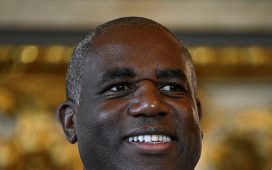Investors swiftly reshuffled their portfolios this week, as they absorbed the Federal Reserve’s signals and prepared for the effects of higher interest rates for longer than they had previously thought.
Stock prices slumped, the dollar soared and bond yields crept higher after the Fed meeting on Wednesday: Despite holding rates steady, a shift in Fed policymakers’ predictions about how long they expected to hold interest rates at high levels prompted a sharp reassessment on Wall Street.
The S&P 500 index slumped lower for the third consecutive week, despite paring some of its losses on Friday with a modest gain. It ended the week down close to 3 percent, its worst weekly performance since March, after the collapse of Silicon Valley Bank.
The yields on longer-dated bonds, which serve as a gauge of the cost of corporate borrowing and can weigh on stock prices, rose to levels last seen in the buildup to the 2008 financial crisis. The 10-year Treasury yield briefly moved above 4.5 percent, its highest since September 2007, up roughly half a percentage point so far this month, a sizable move in that market.
Investors yanked nearly $18 billion from stock markets in the United States in the week through Wednesday, according to data from EPFR Global, the most in a week since late 2022, and that was before the Fed’s announcements pushed yields even higher.
The stock market’s rate-sensitive areas, such as technology stocks, have been particularly hard hit. The tech-heavy Nasdaq Composite fell 3.6 percent for the week.
“Investors appear concerned that keeping rates higher for longer will weigh on equity valuations and make it harder for the Fed to achieve a soft economic landing,” Keith Lerner of Truist said in a research note on Friday.
Fed officials now predict that interest rates will end next year at 5.1 percent, according to the median projection by policymakers, markedly higher than their 4.6 percent forecast in June.
The Fed chair, Jerome H. Powell, and many economists have expressed hope that the economy can remain resilient despite the squeeze from higher interest rates. Higher interest rates are still making their way through the economy, confronting consumers when they refinance mortgages or take out new loans, and hitting companies when they roll over debt fixed when interest rates were much lower.
It’s partly because the economy has held up so well that the Fed expects to have to do more to try and slow it down in order to tame stubborn inflation, while trying to avoid tipping it into recession. That economic resilience should mean that the stock market “can handle higher bond yields better,” analysts at Deutsche Bank noted.
The stock market remains about 13 percent up from the start of the year, despite sharply higher interest rates. But investors are wary of putting too much confidence in predictions for the path of rates in the future.
In January, trading in financial markets implied that the Fed would be cutting rates as soon as this month. Now, investors expect rate cuts to begin in the second half of next year.
“Forecasting is very difficult,” Mr. Powell said in a news conference on Wednesday. “Forecasters are a humble lot with much to be humble about.”
In the next few months, investors must contend with the autoworkers’ strike, the restart of student loan repayments and the threat of a government shutdown.
“There is a lack of upside catalyst in the near term to get more bullish about,” Mr. Lerner of Truist said.






